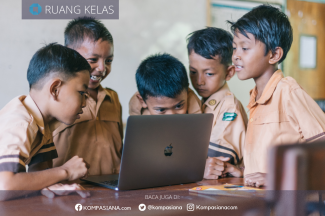Introduction
As a young generation who contributes to sustainable development both in terms of national and regional needs, of course, understand how energy plays a role in moving life. And it is the obligation of every country to provide technological resources so that the fulfillment of energy needs can be carried out optimally. However, recently the issue of energy transition has often been discussed by environmental activists and even state figures. This issue is very strong, when the world pandemic was hit by COVID-19, which made the pressure to develop environmentally friendly energy become massive. Countries may experience an energy crisis, because fossil energy, coal, or oil will decrease. This is a major problem in sustainable development in the world, including in ASEAN countries. Therefore, an innovation is needed in the use of renewable energy sources to meet the national energy needs of each country. Innovation in the use of nuclear energy as a realistic solution is the key in preparing and implementing an energy transition strategy to reduce dependence on coal energy sources and challenges in providing renewable energy. In the context of this situation, considering that the main ingredients of nuclear energy such as Uranium, Thorium, and Plutonium have low carbon emissions compared to geothermal energy, hydropower, and wind. And on a large scale capable of providing energy for the long term regardless of season. Its use is also always focused on technological developments that are proven to be safe, relatively economical, clean, and in line with the goal of overcoming the impacts of climate change.
Revealing the Intensity of Nuclear Energy
Several ASEAN countries have planned the use of nuclear energy as a realistic solution to long-term energy needs that are safe and environmentally friendly. So do not be surprised if ASEAN countries such as Indonesia, Malaysia, Vietnam, Thailand, and Cambodia have conducted research on nuclear programs. Plans and development of nuclear energy programs that have been pursued by the state can be used as a starting point to mark the country's commitment to nuclear energy in the future. Is it proven that nuclear energy is an effective energy in the energy transition strategy or from year to year the demands for energy needs are getting more urgent. With this transition strategy, it is hoped that the country can achieve the goal of increasing the contribution of renewable energy in the energy mix; increase the country's resilience and self-reliance regarding long-term energy and meet climate change targets.
Nuclear energy is an efficient and environmentally friendly energy source in slowing global warming. The reaction is capable of producing greater energy than other energies, for example 1 gram of Uranium can be obtained which is equivalent to about 112 kg of coal, efficiency can also be seen from the tempo of the nuclear fuel cycle which is around 1.5 years. Its flexible nature makes it easy to use to reach any location, and NPP is capable of generating large amounts of electrical energy. So that nuclear energy can help 2 big problems in the world, namely "Energy Security" and "Climate Change Effects". It is also realized by developed countries that are members of the IAEA, that the increasing global climate change will encourage them to seek energy that is low in carbon emissions, affordable, reliable, efficient, environmentally friendly, and managed proactively and socially acceptable.
It is seen that nuclear energy can help test equipment and infrastructure non-destructively without having to stop the ongoing production process. Through nuclear medicine, the patient's disease diagnosis can be known in a relatively short time and accurately. And in agriculture, nuclear energy can help improve crop seed quality through genetic engineering and mutations in plants.
Anticipate the Future
The positive side obtained from the use of nuclear energy is certainly a potential for the country in overcoming problems in the energy sector, such as reducing greenhouse gas emissions in order to limit climate change. Not only that, nuclear energy has a great opportunity to fulfill aspects of being a developed country. Behind this potential, of course, there are threats and challenges ahead, for example the issue of the high cost of nuclear energy and the misuse of nuclear materials into nuclear weapons. However, if you look at various scientific data, the benefits of nuclear energy far outweigh the risks. For example, in 2014 the average cost of producing electricity in the United States from nuclear power plants was 2 cents/kilowatt-hour, which is equivalent to the cost of coal and hydropower. In addition, each country carries out diplomacy and strength to prevent the misuse of nuclear materials. On the other hand, to deal with these various threats, several ASEAN countries have established energy cooperation by establishing the Nuclear Energy Cooperation Sub-Sector Network in 2008 and each year holding a meeting of the Energy Ministers of ASEAN countries (AMEM). One of the programs is Civilian Nuclear Energy to facilitate the exchange of information/capacity building from the use of nuclear energy or technology and launch a program to deal with challenges related to nuclear safety/security for civilians in the last 5 years. Then, on 23 June 2020 as the 10th annual meeting, this NEC-SSN meeting followed up on the previous meeting held in the Philippines by highlighting the 2020 NEC-SSN Priority Work Plan roadmap, as well as CNE's Annual Priority Plan for APAEC 2021-2025 and building joint innovations. ASEAN with Dialogue Partners/International Organizations as well as recent activities in the development, study, research, and technology of nuclear energy.
Conclusion
Through plans to develop nuclear energy programs and regional cooperation in the energy sector. The innovation of optimal and proportional utilization of nuclear energy is the best strategy in the energy transition process to increase the contribution of renewable energy and ensure the security of national energy supply in various countries, especially ASEAN countries.
Baca konten-konten menarik Kompasiana langsung dari smartphone kamu. Follow channel WhatsApp Kompasiana sekarang di sini: https://whatsapp.com/channel/0029VaYjYaL4Spk7WflFYJ2H
